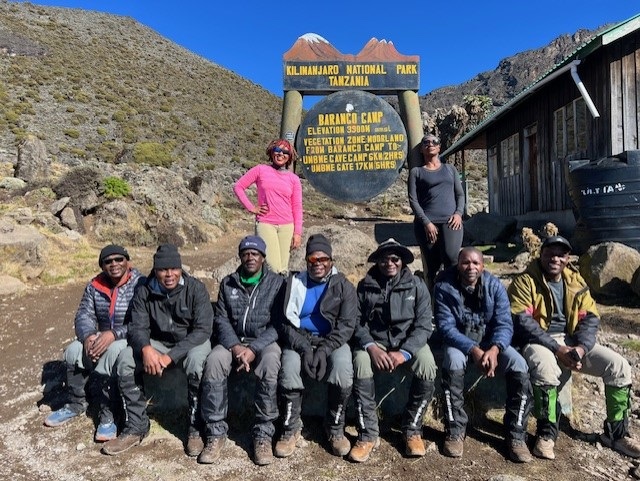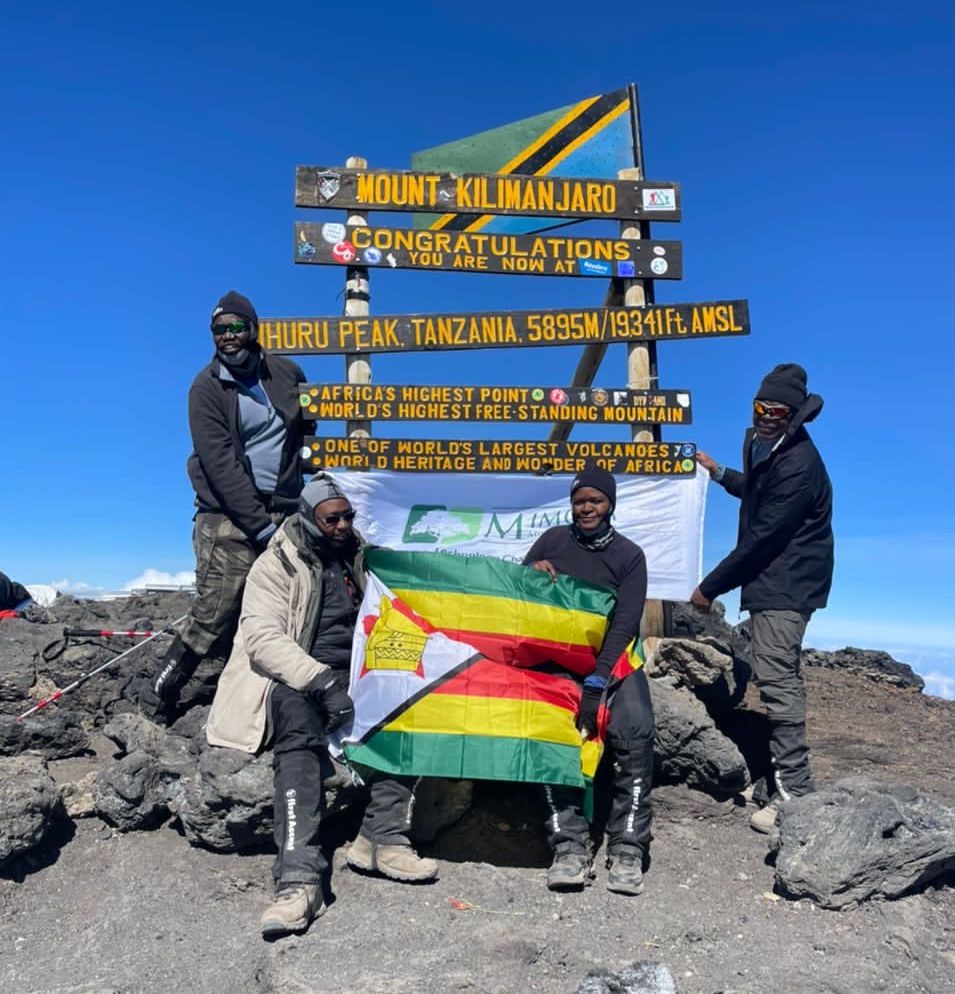
- About 60% of people who attempt Mount Kilimanjaro succeed, but the five-day hike remains gruelling.
- A group of Zimbabweans tackled the mountain, and found themselves facing challenges they had not fully anticipated.
- Those who summited say it changed their perspective on life.
About 60% of the more than 35 000 people who attempt to summit Mount Kilimanjaro succeed, but there are also about 10 or so deaths per year.
It's referred to as "Africa's highest point" or "the world's highest free-standing mountain" - and, at times, "one of the world's oldest volcanoes".
Those superlatives stand high on a signpost at the summit of Kilimanjaro's Uhuru Peak, the highest elevation that stands at 5.895km above sea level.
Some choose to fly from Arusha past Kilimanjaro, which gives them a bird's-eye view of the mountain to take pictures.
So popular is the flight; it has two trips per day.
Still, to get a real kick out of Kilimanjaro, climbing the mountain is what one needs. Going up the mountain takes an average of five days and two days of ascending.
The mountain has three levels that are punctuated by camps for hikers.
It is at these camps that hikers record milestones. Shira is the lowest cone at 4 005m (13 140ft), there's Mawenzi, the second highest cone at 5 149m (16 893ft), and Kibo is the highest level, which is the summit, reaching 5 895m above sea level.
The challenge
But that didn't scare a group of mostly first-timers from Zimbabwe.
It began with a phone call between two friends, Steve Ndiyamba, a mining engineer, and adrenalin junkie Elijah Msipa, who asked the former whether he was interested in the expedition.
Msipa failed to scale the heights of Tanzania's biggest tourist attraction four years ago with his brother, Christopher.
He wanted a second shot at it, and he and Ndiyamba to put together a team of hikers.
Nine of the hikers were Ndiyamba's colleagues at Mimosa Mines, one of the biggest platinum mineral mines in Southern Africa.
As the general manager, he considered the challenge a good team-building exercise.
Little did he know that it was going to be a mixture of pain, suffering and near-death experiences.
Getting ready
Ndiyamba's crew began preparing for what would later prove to be the most challenging time of their lives, six months ahead of departure, by hiking in Zimbabwe.
"We hiked almost all the high places around in preparation. Some colleagues joined cycling groups, the gym, and other physically demanding hobbies," Ndiyamba told News24.
They also went as far as climbing a 11 400 feet (3 475 metres) Drakensberg peak.
What started as a group of well over 20 ended up with 16 members because of "natural selection".
Their ages ranged from 30 to 63.
In retrospect, says Ndiyamba, none of them were ready.
The hike
During their week-long hike, the group faced hypothermia, possible heart attacks, diarrhoea, and respiratory infections.
One of the hikers, Bekithemba Nyathi, said his biggest problem was altitude sickness because their bodies had to adjust to reduced oxygen and changes in air pressure.
"At some point, you would feel a headache, then later vomiting. That's why when climbing we would go high up and then go a bit down where we would put up for the night, so that our bodies adapt.
"Even then, when back in your tent, you would have to deal with insomnia - that's also associated with altitude, and that you are in unfamiliar territory," he said.
Each hiker had at least six porters to their service, carrying their bags and necessities.
Porters climb Kilimanjaro regularly with hiking teams who pay at least US$2 000 for one person to summit.
In most cases, the hikers would arrive where they would put up for the night to find their porters having prepared their tents, food and drink.
They also help struggling hikers when the going gets tough.
"At one point, I could not move my legs, my body had failed me, and I was no longer in control. One step per 30 seconds is all I could do and we were halfway up the mountain.
"That was when I bonded with the porters, they helped me get to the next resting point," said Ndiyamba.
Ndiyamba said the hike pushed him to his mental limit.
"I don't remember what happened at some point, for like, I think two hours. My mind was blank, but the body was alive," he added.
Hikers go up the mountain at something of a snail's pace because, when lifting one's body against gravity, you need more oxygen and energy. Let alone when going more than 19 000ft above sea level.
In the early stage of the hike, everyone seemed to enjoy it, but the higher they went their moods changed.
"We would share jokes from time to time and we even had a Bluetooth speaker to play music. We danced and had fun. But, later, no one had the energy to talk to anyone, it was each person for himself, listening to their heartbeat, and feeling the pain from their limbs or other parts of the body.
"It went as far as asking one's self, 'why did I agree to this', but there was comfort in that we were a group, and one of us was a doctor. From time to time, we would pester him for medication," said another hiker, George Nyambiya.
Cellphone reception was bad on the hike and, being out of communication with one's family, added its own mental stresses.
At one point, there was a good signal and some hikers called home to alert their families that they were alive.
Nyathi said: "My wife didn't hear from me for days and my mother suggested that they call the mine and find out if they had heard from us.
"Our families were aware of the dangers that we had presented ourselves to. Each one of us dealt with our family fears in our way. But the discomfort was there."
The summit
"It was a moment to cherish. My whole life flashed before my eyes as I enjoyed being at the highest point in Africa," said Kuthula Phiri, another hiker.
Phiri said that, during the hike, the group had gone through tests they had never experienced, but that Kilimanjaro "rewarded me with a feeling and a view that has changed my perspective on life".
Ndiyamba, in his 60s, is one of the few that failed to summit because his body had given in.
He couldn't lift his legs, all he wanted to do was sit or even lie down, but having come close to the summit, "in my mind reaching this point was more than an achievement".
As challenging as it was, given a chance, many from the group said they would go back to Kilimanjaro because it's a hike that talks to one's inner self and prepares them for the real world.
Ndiyamba has since written a book, titled "One Week in December: Summiting Mount Kilimanjaro."
The News24 Africa Desk is supported by the Hanns Seidel Foundation. The stories produced through the Africa Desk and the opinions and statements that may be contained herein do not reflect those of the Hanns Seidel Foundation.




 Publications
Publications
 Partners
Partners


























